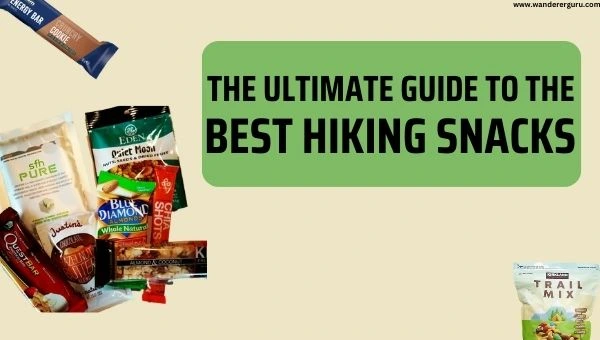Hiking, undoubtedly, is a thrill outdoor activity. The rush of adrenaline as you ascend the mountains, the scenic views, and the serenity of nature. It’s a refreshing experience unlike any other. But the truth is, hiking also tests your physical limits, demanding a substantial amount of energy and endurance. This is where the importance of choosing the best hiking snacks comes in.
In this comprehensive guide, we will delve deep into the world of hiking snacks. Will discuss their significance and explore the top choices you should consider for your next outdoor trip. As you conquer the trails, these nutritious, lightweight, and convenient snacks will keep your energy levels high.
1. Energy Bars – (Editor’s Pick for Best Hiking Snacks for Energy)
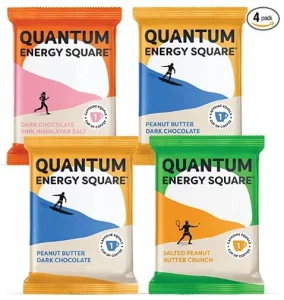
Energy bars, a staple in every hiker’s backpack, are an excellent source of quick, convenient energy. With a multitude of options on the market, selecting the right energy bar can be overwhelming. Consider bars made from natural ingredients that offer a balance of carbohydrates, protein, and fats.
Clif Bars, for instance, offer a healthy mix of oats, fruits, and nuts, packed with protein to sustain energy levels. KIND Bars are another delicious alternative, filled with heart-healthy nuts and drizzled with honey. For a clean, protein-packed option, look for RXBARs, known for their simple ingredients and high protein content.
2. Trail Mix -(Best Snacks for Hiking in Hot Weather)
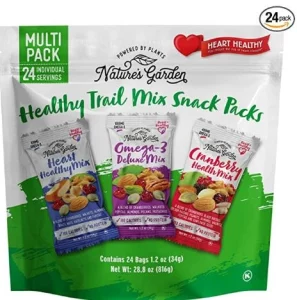
Trail Mix is a timeless hiking snack, boasting a delightful blend of flavors and textures. It’s a satisfying mix of dried fruits, nuts, and a touch of sweet ingredients like chocolate or yogurt-covered treats.
Look for trail mixes with a good balance of salt and sweetness to replenish the electrolytes lost during a strenuous hike. Opt for mixes that contain almonds, cashews, or peanuts for a protein boost, and dried fruits like raisins or cranberries for quick carbs and fiber.
If you want to get creative, you can also make your own trail mix. Customize your blend to fit your dietary needs and flavor preferences – the possibilities are endless.
3. Jerky – (Best Snacks for Hiking in Cold Weather)
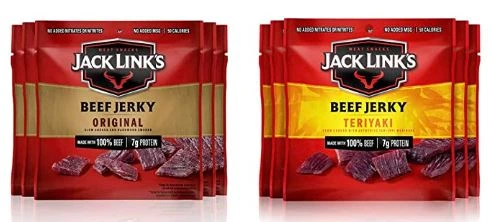
Jerky is a top-tier hiking snack when it comes to protein content. Lightweight, non-perishable, and packed with flavor, jerky can be an excellent choice to satisfy your mid-hike hunger pangs. Whether you prefer beef, turkey, or vegan alternatives, there’s a jerky out there for everyone.
Remember to choose options low in added sugars and artificial ingredients to make the most of this protein-packed snack.
4. Nut Butter – (Best Homemade Hiking Snacks)

Nut butter, such as almond or peanut butter, is a versatile and delicious source of healthy fats and protein. Single-serving packets of nut butter are perfect for a quick, mess-free snack on the trail.
Spread some on whole grain bread, pair with an apple, or enjoy straight from the packet for a satisfying, energy-boosting snack. Brands like Justin’s offer convenient, single-serving packets in various flavors to keep your taste buds excited.
5. Tuna Packets or Cans – (Best Lunch for Hiking)
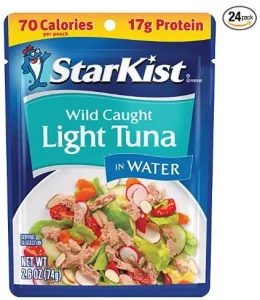
For a longer hike, you might require something more substantial than just snacks. Tuna packets or cans can come in handy here. They’re an excellent source of lean protein and omega-3 fatty acids, which can help reduce inflammation after a tough hike.
Lightweight and shelf-stable, tuna packets require no refrigeration, making them a convenient addition to your backpack. Pair them with whole-grain crackers for a satisfying, balanced meal on the go.
6. Cheese and Crackers – (High-Calorie Hiking Snacks)
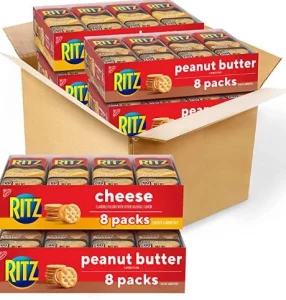
Cheese and crackers offer a delightful combination of creamy, crunchy, and savory flavors that can be incredibly satisfying during a long hike. Certain cheeses, like hard cheddar or gouda, can stay fresh without refrigeration for a day.
Whole-grain crackers paired with your favorite cheese can provide a good balance of carbs, fats, and protein. Remember to portion your cheese to avoid adding too much weight to your pack.
7. Dark Chocolate – (Energy Booster Snacks)
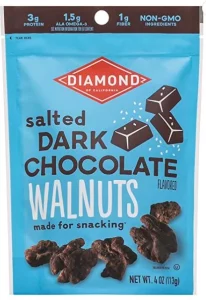
Hiking should also have its delightful moments, and what better way to enjoy a break than with a piece of dark chocolate? Besides its irresistible taste, dark chocolate is rich in antioxidants and can provide a quick energy boost thanks to its natural sugar content.
Opt for high-quality dark chocolate with a high percentage of cocoa for the most health benefits. As a bonus, dark chocolate can also provide a mood lift, adding an extra sprinkle of joy to your adventure.
8. Granola or Protein Bars – (High Protein Hiking Snacks)
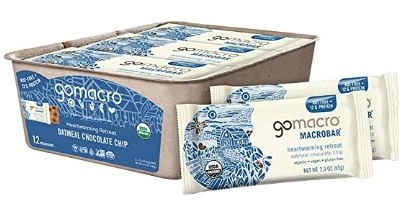
Another fantastic option to consider for hiking snacks is granola or protein bars. Similar to energy bars, they come in a variety of flavors and nutritional profiles. Nature Valley granola bars are a popular choice, with their crunchy texture and honey-infused flavor.
For a protein-packed option, Quest protein bars are hard to beat. They come in a plethora of flavors and boast an impressive 20 grams of protein per bar.
9. Fresh Fruits – (Rich Fiber Snacks)
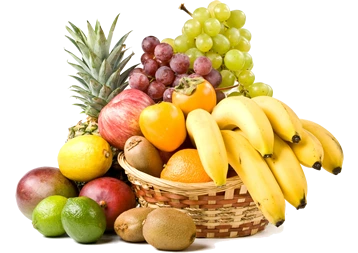
Last but certainly not least, don’t forget the power of fresh fruits. While they might be a bit heavier to carry, fresh fruits like apples, oranges, and bananas provide natural sugars for quick energy, fiber for sustained fullness, and essential vitamins and minerals to keep your body functioning at its best.
For shorter hikes, packing a couple of your favorite fruits can offer a refreshing and hydrating snack while you navigate the trails.
Some Healthy Instant Meals with Boiling Water

Here are some healthy instant meals that you can prepare with boiling water during your hiking trip:
Instant Oatmeal: This is a nutritious and filling option for breakfast. You can buy pre-packaged varieties but consider getting plain oatmeal and adding your own spices, dried fruit, or nuts for additional nutrients without added sugars.
Couscous: This cooks really quickly with boiling water. You can get pre-packaged varieties with flavorings, or add your own dried fruits, nuts, or spices.
Instant Rice: Like couscous, instant rice cooks quickly with boiling water. You can get flavored varieties, or add your own spices, dried vegetables, or pre-cooked dried meats.
Instant Noodles: While many varieties of instant noodles are not particularly healthy, there are more nutritious options out there. Look for whole grain, lower sodium varieties, and consider adding your own dried vegetables and protein.
Instant Soup: There are many different flavors of instant soup available, and many of them can be quite nutritious.
Dehydrated Beans and Legumes: They usually need to soak for a while in boiling water, but they can make a hearty and nutritious meal. Consider adding some instant rice for a complete protein.
Instant Quinoa: Quinoa is a complete protein and a good source of fiber. Instant varieties cook quickly in boiling water.
Freeze-Dried Fruit: This can be a good option for a quick snack or to add to other meals. Just rehydrate with a bit of boiling water.
Powdered Eggs: While not the tastiest option on their own, powdered eggs can add a good amount of protein to other dishes, like instant oatmeal or soup.
Remember to keep a balanced diet. It’s important to get enough protein, carbohydrates, and fats, as well as vitamins and minerals. Also, consider the weight and how much space the food will take in your backpack.
Low Sodium Backpacking Meals
Here are 3 low sodium backpacking meals:
Quinoa and Vegetable Medley
Low Sodium Tuna with Whole Grain Crackers
Chickpea Pasta Salad with Freeze-Dried Vegetables
Bonus:
IS POLYESTER GOOD FOR HIKING? POLYESTER VS COTTON
Hiking Snacks Recipes
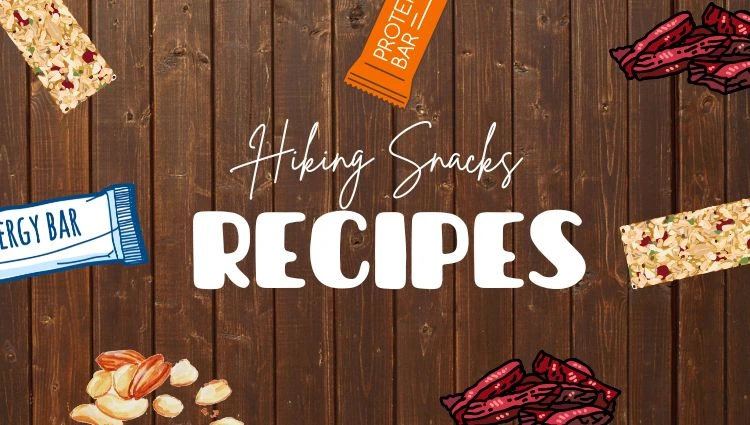
Certainly, here are some easy recipes for hiking snacks that you can prepare at home:
Homemade Trail Mix
Ingredients: mixed nuts (almonds, cashews, peanuts), dried fruits (raisins, cranberries, apricots), seeds (pumpkin, sunflower), dark chocolate chunks or M&Ms, coconut flakes.
Method: Simply mix all your ingredients together and store in airtight containers or Ziploc bags. Feel free to add or substitute your favorite nuts, seeds, and dried fruits.
No-Bake Energy Balls
Ingredients: 1 cup of old-fashioned oats, 1/2 cup of peanut or almond butter, 1/2 cup of ground flaxseed, 1/3 cup of honey or maple syrup, 1/4 cup of mini chocolate chips, 1 teaspoon of vanilla extract.
Method: Mix all ingredients in a bowl until thoroughly incorporated. Let it chill in the refrigerator for half an hour. Once chilled, roll into balls. Store in an airtight container and keep refrigerated for up to 1 week.
Homemade Beef Jerky
Ingredients: 2 lbs of lean beef (like flank steak), 1/4 cup of soy sauce, 1/4 cup of Worcestershire sauce, 2 tablespoons of brown sugar, 2 teaspoons of black pepper, 1 teaspoon of onion powder, 1 teaspoon of garlic powder.
Method: Slice beef into thin strips. Combine all other ingredients in a bowl to make the marinade. Marinate beef in the refrigerator for at least 2 hours, preferably overnight. Arrange beef slices on a baking sheet and bake at 175°F (80°C) for 3-4 hours until it reaches your desired texture.
Homemade Granola Bars
Ingredients: 2 cups of old-fashioned oats, 1 cup of nuts (like almonds, walnuts), 1/2 cup of honey or maple syrup, 1/4 cup of peanut or almond butter, 1/2 cup of dried fruit (like cranberries, raisins), 1/4 cup of mini chocolate chips.
Method: Toast oats and nuts in the oven at 350°F (175°C) for 10 minutes. In a pan, melt honey and peanut butter together. Mix toasted oats and nuts, honey and peanut butter mixture, and dried fruits until combined. Press the mixture into a baking dish and sprinkle the chocolate chips on top. Chill in the refrigerator for a few hours, then cut into bars.
Remember that these snacks, while made to be portable and durable, should be stored properly to maintain their freshness. Consider using vacuum-sealed bags if you’re preparing far in advance.
Conclusion
Hiking is a physically demanding activity that requires proper fueling. Whether you’re a novice hiker or a seasoned trekker, having the right snacks can make a significant difference in your energy levels and overall hiking experience. From classic trail mixes to convenient energy bars and substantial meal options like tuna packets, there’s a myriad of snacks to choose from.
As you plan for your next outdoor adventure, consider your dietary needs, preferences, and the length and intensity of your hike. Remember, the best hiking snacks are those that keep you energized, satisfied, and excited for the journey ahead. So, pack your backpack, tie your boots, and don’t forget to enjoy every step (and snack) along the way.
FAQs
Are mountain house meals healthy?
Mountain House meals, which are freeze-dried meals typically used for camping, backpacking, and emergency preparedness, can be a convenient option when fresh food isn’t available. However, like many pre-packaged meals, the healthiness of Mountain House meals can vary widely depending on the specific product and the individual’s nutritional needs.
How to pack food for camping?
When packing food for camping, start by planning your meals based on the length of your trip and available cooking facilities. Choose food that’s non-perishable, easy to prepare, and lightweight, such as canned goods, pasta, instant meals, and high-energy snacks like trail mix. If you bring perishable food, store it in a cooler to prevent spoilage.
Ensure you pack necessary cooking equipment, including pots, pans, utensils, and a camping stove if needed. Lastly, pack your food in reusable containers or zip-lock bags to keep it organized and save space. Remember to carry essentials for clean-up, like dish soap, a scrubbing brush, and trash bags.
Why eat salty snacks when hiking?
When hiking, especially for extended periods or in hot conditions, your body loses electrolytes, including sodium, through sweat. Sodium is essential for many body functions, such as maintaining fluid balance, aiding in nerve function, and muscle contraction.
Salty snacks can help replenish this lost sodium, keeping you hydrated and preventing conditions like hyponatremia (low sodium levels in your blood). This condition can be dangerous and lead to symptoms like nausea, headache, confusion, and in extreme cases, seizures and coma. For more ideas visit my Pinterest.
Bonus:

